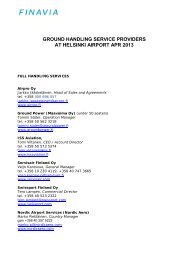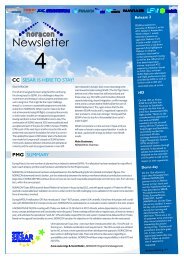You also want an ePaper? Increase the reach of your titles
YUMPU automatically turns print PDFs into web optimized ePapers that Google loves.
18 V I A HELSINKI<br />
Peas on<br />
the knife?<br />
Many of us pause for a moment when we find three knives<br />
and three forks beside our plate. What was that etiquette<br />
again? And, where did those rules originate? The etiquette<br />
best known in the west, the rules of good manners, is actual-<br />
ly French, and dictates how you should behave at the dining<br />
table. For example, in western etiquette you show by the po-<br />
sition of your cutlery whether you have finished your course<br />
or would like some more.<br />
French dining etiquette is not universal, though, and<br />
each culture has its own rules. Eating habits and even the<br />
utensils vary from country to country. In the west we de-<br />
pend on the knife and fork, China eats with chopsticks and<br />
Thailand uses a fork and spoon. You use the fork to push<br />
the food onto the spoon and eat from that.<br />
We should be aware that many dislikes and ideas about<br />
food are acquired and culturally based. While fried cock-<br />
roaches may be a huge delicacy in Asia, westerners might<br />
well squirm at the thought. Indians wonder how westerners<br />
can eat a cow, a sacred animal. For Indians, eating the flesh<br />
of a cow is about as weird as eating a pet dog would be to<br />
westerners.










